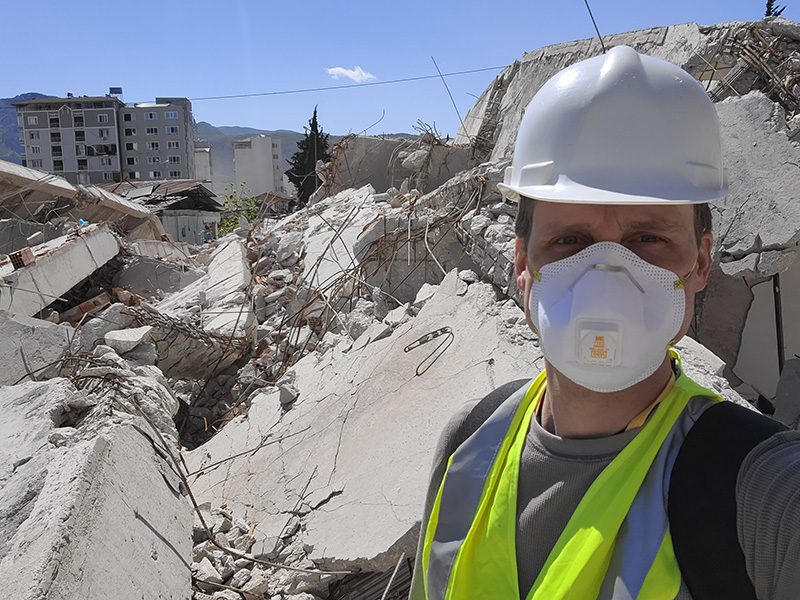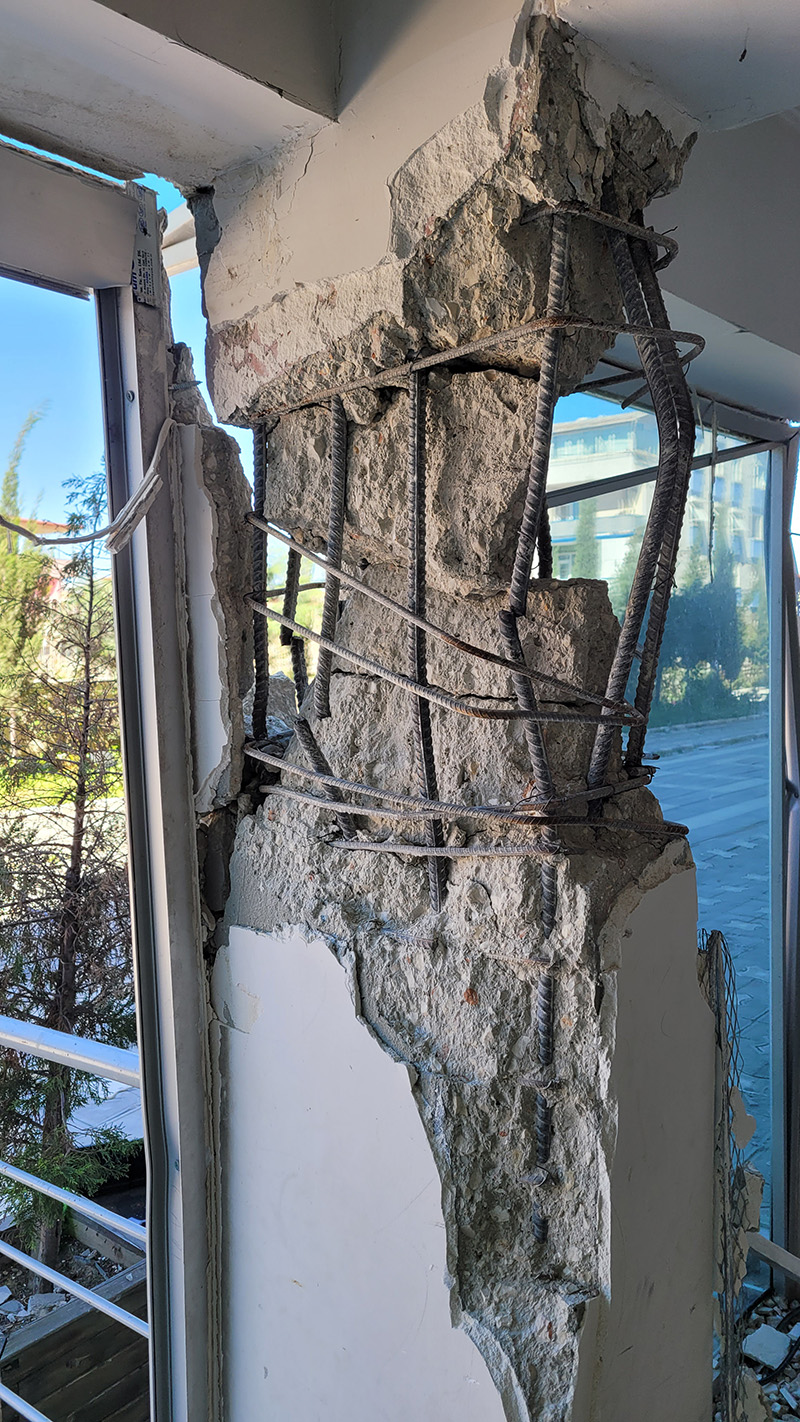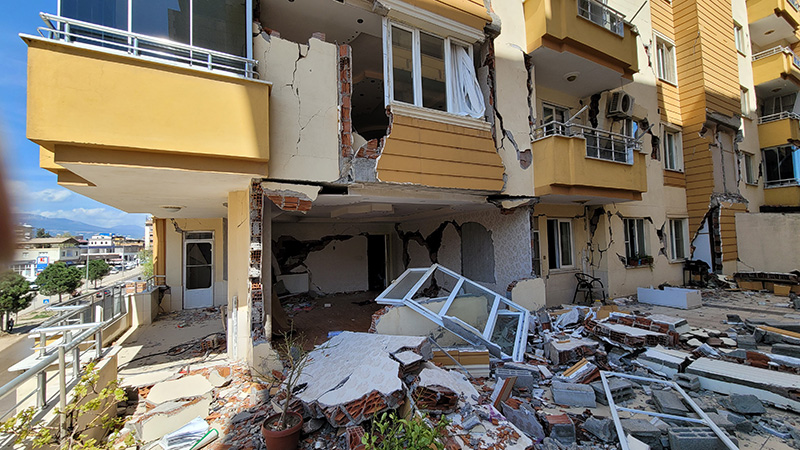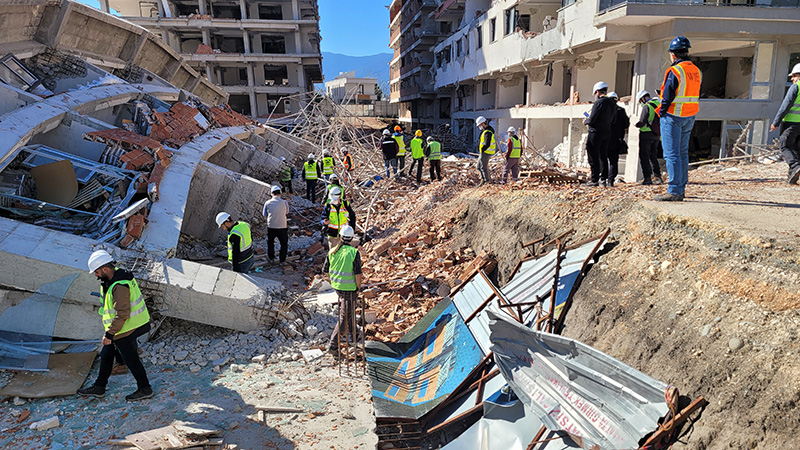KU Engineering professor surveys earthquake damage in Turkey
LAWRENCE — When Rémy Lequesne worked his steel-toed boots over the pervasive rubble of apartment buildings, schools, hospitals and dozens of other structures damaged and destroyed by a massive earthquake in early February in Turkey, he faced the real-life devastation already known by so many: more than 50,000 dead, more than 1.5 million left homeless, more than $100 billion in damage.

But as the professor from the University of Kansas moved from town to town looking for reasons so many concrete buildings failed — beyond the obvious, immense power of the 7.8-magnitude quake — Lequesne collected clues from among the collapsed floors, twists of exposed steel and cracks that had split hardened combinations of rock, cement and water.
Now the answers he’s uncovered will be put to work revising building codes that could help reduce the damage inflicted by future movements of the Earth’s crust.

“We can make a difference,” said Lequesne, who specializes in how reinforced concrete performs under extreme loads. “We can do better. We can and have to do better, with design, to help avoid collapses, and I think there are things we can do.”
Lequesne, the Stanley T. and Phyllis W. Rolfe Chair’s Council Associate Professor at KU’s School of Engineering, surveyed damage from the Feb. 6 quake as part of a team financed by the American Concrete Institute (ACI). Experts from the United States, Mexico and New Zealand joined faculty, practicing engineers and university students from Turkey to survey and learn from the damage.
With 30,000 members in 120 countries, ACI works to develop consensus-based standards and technical resources that serve as the foundation for concrete-specific sections of building codes in the United States and abroad. The organization also conducts programs for certification, training and education.

Lequesne is confident that the team’s work will result in solid recommendations for updating building codes. Many of the structures that collapsed in Turkey — while built to existing code — would have stood stronger and been safer had they been more stiff, likely by having more concrete walls within their interiors.

“It’s a progressive, continuous process,” he said. “But we can do better.”
The team’s report is expected to be finished later this year, and its findings will be shared during presentations at industry conferences. Lequesne also plans to build lessons from his surveying experiences into his classes, to help the next generation of engineers understand what’s at stake — and strive for advancements that can make a difference.
“If I can connect what we’re learning in class with the human impacts of the decisions we make, that makes it relevant,” he said. “You can see it: What engineers do is important. It’s important work.”
Top right photo: Rémy Lequesne dons an N95 mask in front of a 13-story apartment building in Antakya, Turkey, that collapsed during the Feb. 6 earthquake. His tight-fitting protection wasn’t to ward off COVID-19, he said: “We wore these for dust — the air quality was poor because of active demolition work throughout the affected areas.”
Upper-right photo: Rebar couldn’t prevent failure of a concrete column of an 11-story apartment building in Antakya, Turkey.
Lower-right photo: Lacking stiff enough support, a concrete building’s nonstructural elements — doors, windows and more — are particularly susceptible to failure. Limiting such damage is a key to improving building safety, Lequesne said.
Bottom photo: Members of ACI Committee 133 (aka “Disaster Reconnaissance”) and collaborators examine a collapsed apartment building that had been under construction when the quake hit in in Antakya, Turkey. Lessons learned from the destruction could lead to stronger standards for new construction in building codes in the U.S. and abroad.